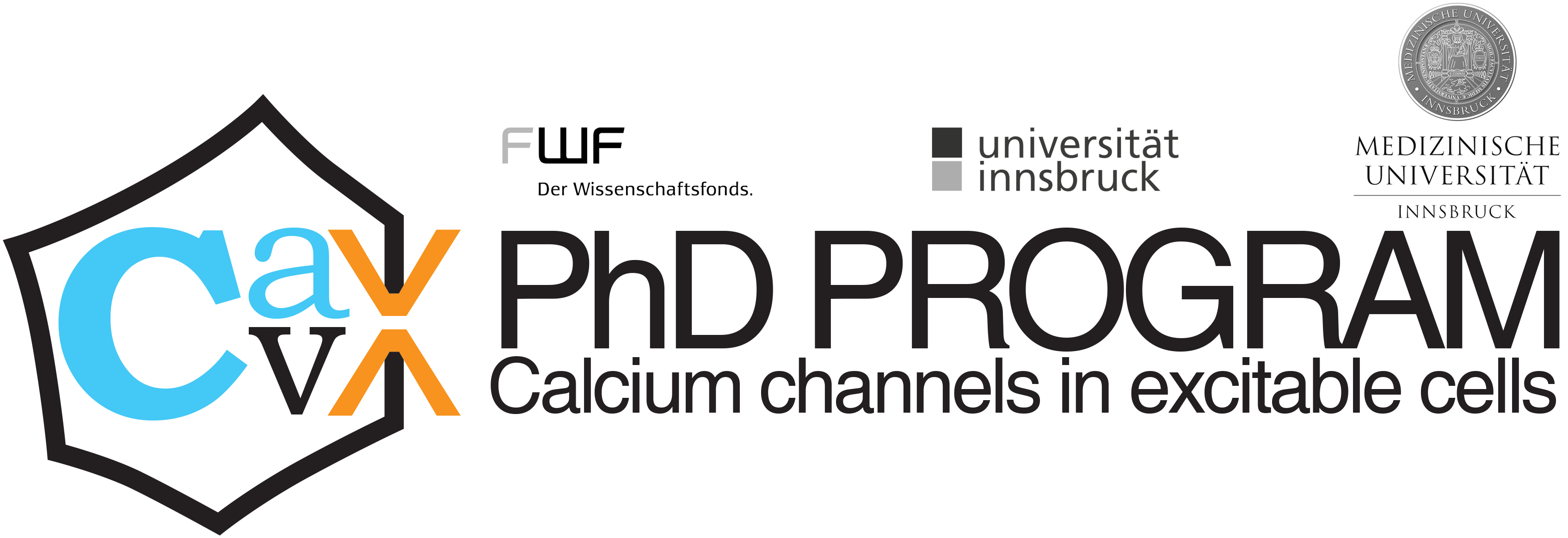// KOSCHAK GROUP
Keywords: L-type calcium channels, Cav1.4, CACNA1F, Congential stationary night blindness type 2 (CSNB2)
// AIM
- Evaluate the role of L-type calcium channels in visual disorders
- Examine the pharmaco-therapeutic potential of Cav1.4 L-type Ca2+ channels
- Investigate novel pathogenic mechanisms in Cav1.4-mediated retinal diseases
// APPROACH and RESEARCH
A number of channel dysfunctions have been described that are caused by mutations in the CACNA1F gene, which encodes for the Cav1.4 LTCC alpha1 subunits. A majority of mutations was, however, identified among patients originally diagnosed with congenital night blindness type 2 (CSNB2; OMIM: 30071). Many Cav1.4 mutations are predicted to cause severe structural changes that they are unlikely to form functional channels, often due to premature truncation forming a large group of ‘loss-of-function’ mutations. ‘Gain-of-function’ mutations would promote pronounced Ca2+ entry through the channel. We still wish to better understand how the different functional channel phenotypes can all result in defective retinal synaptic transmission underlying CSNB2 symptoms.
In the current CavX projects we evaluate the pharmaco-therapeutic potential of Cav1.4 L-type calcium channels and develop a concept for viral based therapies for Cav1.4-mediated retinal diseases (as such congenital stationary night blindness type 2; CSNB2). We study Cav1.4 expression and function in retinal neurons and mutations in gene-edited retinas. To deepen our understanding of Cav1.4 channel dysfunction we will assess novel pathogenic mechanisms underlying CSNB2.
.
// LAB MEMBERS
- Group leader: Alexandra Koschak
- PhD Students:
-
- Matthias Ganglberger
- Elisa Cornelia Roth
-
// ALUMNI
Hartwig Seitter
Thomas Heigl
İrem Kılıçarslan
Lucia Zanetti
Kathrin Kähler
Verena Burtscher
Dagmar Knoflach
// ADDRESS
Pharmacology and Toxicology,
Institute of Pharmacy
University of Innsbruck
Center for Chemistry and Biomedicine
Innrain 80-82/III
A-6020 Innsbruck, Austria
// SELECTED PUBLICATIONS
Pangrsic T, Singer JH, Koschak A. Voltage-Gated Calcium Channels: Key Players in Sensory Coding in the Retina and the Inner Ear. Physiol Rev. 2018 Oct 1;98(4):2063-2096.
https://pubmed.ncbi.nlm.nih.gov/30067155/
zur Nedden S, Eith R, Schwarzer C, Zanetti L, Seitter H, Fresser F, Koschak A, Cameron AJ, Parker J, Baier G, Baier-Bitterlich G. Protein kinase N1 critically regulates cerebellar development and long-term function. J Clin Invest. 2018 May 1;128(5):2076-2088.
https://pubmed.ncbi.nlm.nih.gov/29494346/
Seitter H, Koschak A. Relevance of tissue specific subunit expression in channelopathies. Neuropharmacology. 2018 Apr;132:58-70.
https://pubmed.ncbi.nlm.nih.gov/28669898/
Knoflach D, Schicker K, Glösmann M, Koschak A. Gain-of-function nature of Cav1.4 L-type calcium channels alters firing properties of mouse retinal ganglion cells. Channels (Austin). 2015;9(5):298-306.
https://pubmed.ncbi.nlm.nih.gov/26274509/
Bacchi N, Messina A, Burtscher V, Dassi E, Provenzano G, Bozzi Y, Demontis GC, Koschak A, Denti MA, Casarosa S. A New Splicing Isoform of Cacna2d4 Mimicking the Effects of c.2451insC Mutation in the Retina: Novel Molecular and Electrophysiological Insights. Invest Ophthalmol Vis Sci. 2015 Jul;56(8):4846-56.
https://pubmed.ncbi.nlm.nih.gov/26218913/
Burtscher V, Schicker K, Novikova E, Pöhn B, Stockner T, Kugler C, Singh A, Zeitz C, Lancelot ME, Audo I, Leroy BP, Freissmuth M, Herzig S, Matthes J, Koschak A. Spectrum of Cav1.4 dysfunction in congenital stationary night blindness type 2. Biochim Biophys Acta. 2014 Aug;1838(8):2053-65. doi: 10.1016/j.bbamem.2014.04.023. Epub 2014 May 4.
https://pubmed.ncbi.nlm.nih.gov/24796500/
Knoflach D, Kerov V, Sartori SB, Obermair GJ, Schmuckermair C, Liu X, Sothilingam V, Garcia Garrido M, Baker SA, Glösmann M, Schicker K, Seeliger M, Lee A, Koschak A. Cav1.4 IT mouse as model for vision impairment in human congenital stationary night blindness type 2. Channels (Austin). 2013 Nov- Dec;7(6):503-13.
https://pubmed.ncbi.nlm.nih.gov/24051672/
Singh A, Hamedinger D, Hoda JC, Gebhart M, Koschak A, Romanin C, Striessnig J. C-terminal modulator controls Ca2+-dependent gating of Ca(v)1.4 L-type Ca2+ channels. Nat Neurosci. 2006 Sep;9(9):1108-16.
https://pubmed.ncbi.nlm.nih.gov/16921373/
Full publication list (Pubmed search)
// FUNDING
Pharmakotherapeutisches Potenzial v. Cav1.4 L-Typ Ca-Kanälen
Projektnummer P 32747 Einzelprojekte
ProjektleiterIn @: Alexandra KOSCHAK

